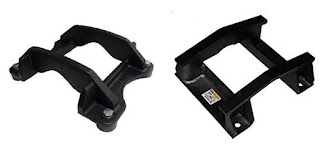The Next Big Thing In Excavator
The Next Big Thing In Excavator
The mining excavator is a huge machine, and the largest model in the world can weigh more than 800 kg. Mining - technology.com has ranked the top 10 largest excavators of all time by operating weight, size, weight and size of their shaft.
JCB compact
excavators are popular in construction applications, but these machines are
increasingly used for mining and other heavy-duty mining applications. The
market for large excavators consists of full-size standard excavators
(sometimes referred to as crawler excavators) and mini excavators, which are
perfect for narrow construction sites. Standard excavations come in a variety
of sizes, from mini excavators (mini excavators) to large
excavators designed for heavy applications, to mini excavators. Conventional
excavators, which fall at the heavier end of the excavator weight classes,
could also present transport and storage difficulties.
The advantage of a wheel excavator is that it can be moved
from one location to another without having to be transported on a trailer,
saving the company time and money. The advantages of mini excavators are that
they are easier to transport in a truck or trailer and consume less fuel than
large excavators. Buying excavation pits that are too small can also lead to
performance problems, as compact excavators do not have the digging power or
depth required for work that requires large excavators. A compact excavator,
also known as a "mini excavator,"
can give you the manoeuvrability and versatility you would miss on a larger
machine.
If you need a Bobcat excavator every day, week, or month,
you can easily borrow equipment for large and small projects. Caterpillar offers
some of the toughest jobs and finding the right machine to do more on your
construction site makes an excavator the perfect choice for any project, not
just a large one. If you need a Bobcat excavator every day, week, or month,
it's easier to rent equipment for
larger and smaller projects. If you need a bobsledder every day, every week or
every month, the easiest way to rent equipment is with a large or small
project.

This type of excavator is suitable for work where the site prevents
the operator from getting too close, such as when your demolition project is
near a river or lake. It is crucial that you use a mini excavator when there is
a chance that the excavation will hit a wall, car, machine, or other obstacle.
This can damage not only the obstacle, but also the excavation itself. An
excavator can perform the same tasks as a conventional excavator and
can be a good choice for any construction project, not just a large one.
In some cases, it may be more useful to work with an
excavator instead, but remember that there are many different types of
excavators for digging projects, such as excavators - excavators, excavators,
excavators and excavators.
The choice between excavators, excavators or other heavy
excavators for your project is yours, because excavators are incredibly
versatile machines. They can level the ground and move large amounts of
material, which performs many of the same tasks as excavators, but with a much
greater load capacity. The load capacity of an excavator can range from a
fraction of a cubic metre in a mini excavator to hundreds of thousands of cubic
metres in a four-wheel drive vehicle and from thousands to millions of square
metres of excavation area at the back of an excavator. The carrying capacity of
excavators can range from fractions of a cube per yard to billions of pounds of
excavation per square foot, from millions to trillions of square feet.
The bucket
is one of the most popular excavator attachments that can increase the
versatility of a machine. The capacity of the bucket of an excavator is
29m3 and that of the bucket
34 m3. If you can secure one by buying a used excavator, then you have a
market for it in the future.
This excavator
guide will help you understand the pros and cons of buying a new vehicle.
To find the ideal investment company
for excavators, browse the inventory of excavations and talk to one of our experts.
If you are planning to buy an excavator for long-term use,
make sure you understand the requirements of your project and the size of the
excavator you choose. Although transporting and storing large excavations can
be a challenge, they are worth the investment if you want to tackle serious
excavation projects with ease. Find out all the maintenance information and
what you can do in an emergency, such as in the event of a power failure, power
outage or even fire. The right size excavator will meet all project
requirements and at the same time be able to manoeuvre safely to and from the
construction site.
Last but not least, the excavator's crawler and
undercarriage are important factors to consider when buying a new excavator.
Although tracked and wheeled excavators are the standard excavations for a
variety of work, you can largely focus on them. They are also called 360-degree
excavations, sometimes simply abbreviated as 360.





Comments
Post a Comment